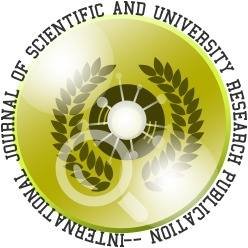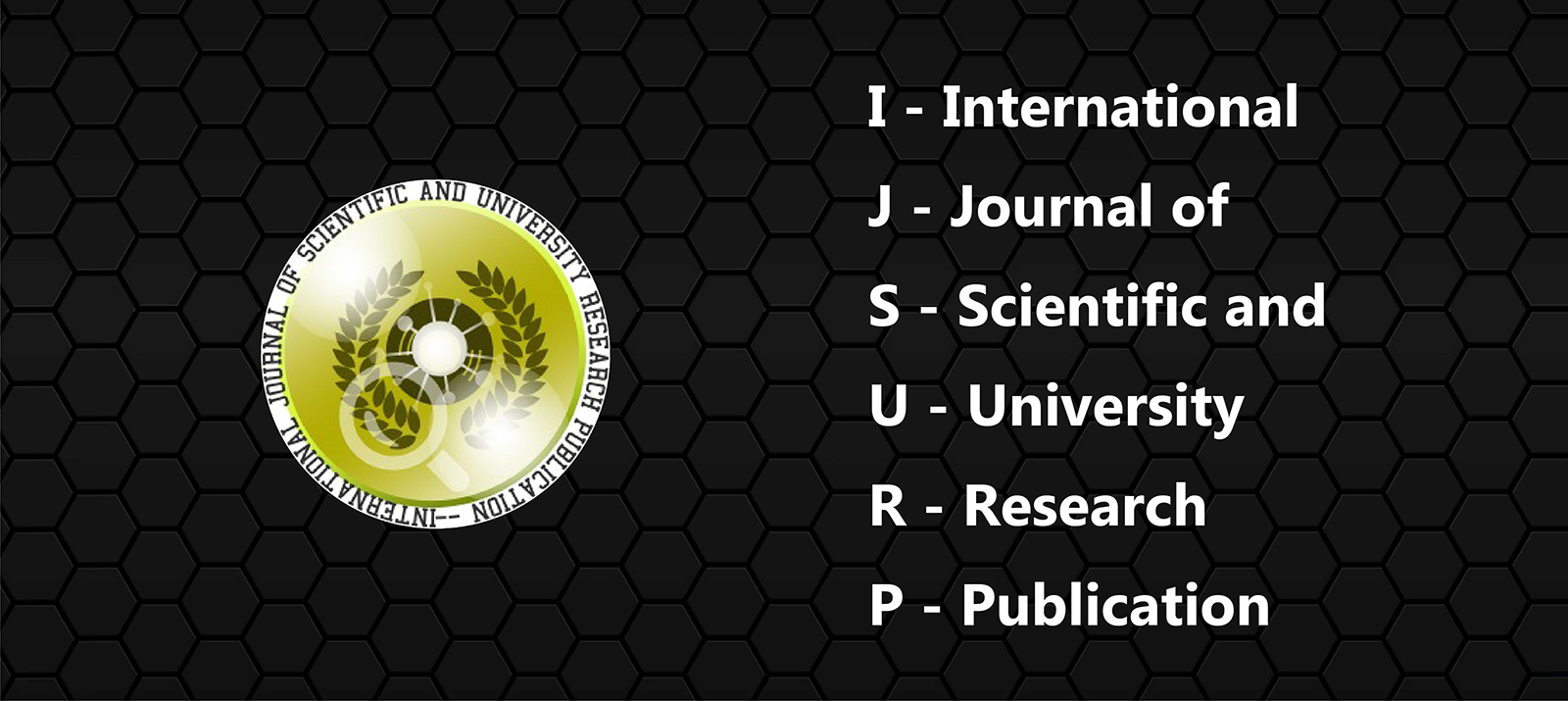
Protein Folding Requires Crowd Control in a Simulated Cell
Authore(s) : Benjamin R. Jefferys || Division of Molecular BiosciencesBiochemistry BuildingImperial College LondonSouth KensingtonLondon SW7 2AZUK.
Volume : (13), Issue : 205, March - 2018

Abstract : Macromolecular crowding has a profound effect upon biochemical processes in the cell. We have computationally studied the effect of crowding upon protein folding for 12 small domains in a simulated cell using a coarse-grained protein model, which is based upon Langevin dynamics, designed to unify the often disjoint goals of protein folding simulation and structure prediction. The model can make predictions of native conformation with accuracy comparable with that of the best current template-free models. It is fast enough to enable a more extensive analysis of crowding than previously attempted, studying several proteins at many crowding levels and further random repetitions designed to more closely approximate the ensemble of conformations. We found that when crowding approaches 40% excluded volume, the maximum level found in the cell, proteins fold to fewer native-like states. Notably, when crowding is increased beyond this level, there is a sudden failure of protein folding: proteins fix upon a structure more quickly and become trapped in extended conformations. These results suggest that the ability of small protein domains to fold without the help of chaperones may be an important factor in limiting the degree of macromolecular crowding in the cell. Here, we discuss the possible implications regarding the relationship between protein expression level, protein size, chaperone activity and aggregation. Abbreviation TM, template modelling
Keywords :Macromolecular crowding; protein structure prediction; protein misfolding; protein aggregation; protein expression.
Article: Download PDF Journal DOI : 301/704
Cite This Article:
Requires Crowd Control in a Simulated Cell
Vol.I (13), Issue.I 205
Article No : 10098
Number of Downloads : 101
References :
Liwo A. Khalili M. Scheraga H.A. Ab initio simulations of protein-folding pathways by molecular dynamics with the united-residue model of polypeptide chains. Proc. Natl Acad. Sci. USA 2005;102:2362–2367. [PubMed: 15677316]
Moult J. Fidelis K. Kryshtafovych A. Rost B. Hubbard T. Tramontano A. Critical assessment of methods of protein structure prediction—round VII. Proteins 2007;69:3–9. [PubMed: 17918729]
Zhang Y. Protein... More
- Liwo A. Khalili M. Scheraga H.A. Ab initio simulations of protein-folding pathways by molecular dynamics with the united-residue model of polypeptide chains. Proc. Natl Acad. Sci. USA 2005;102:2362–2367. [PubMed: 15677316]
- Moult J. Fidelis K. Kryshtafovych A. Rost B. Hubbard T. Tramontano A. Critical assessment of methods of protein structure prediction—round VII. Proteins 2007;69:3–9. [PubMed: 17918729]
- Zhang Y. Protein structure prediction: when is it useful? Curr. Opin. Struct. Biol. 2009;19:145–155. [PubMed: 19327982]
- Das R. Qian B. Raman S. Vernon R. Thompson J. Bradley P. Structure prediction for CASP7 targets using extensive all-atom refinement with Rosetta@home. Proteins 2007;69:118–128. [PubMed:17894356]
- Zhang Y. I-TASSER server for protein 3D structure prediction. BMC Bioinformatics 2008;9:40. [PubMed: 18215316]
- Kelley L.A. Sternberg M.J.E. Protein structure prediction on the Web: a case study using the Phyre server. Nat. Protoc. 2009;4:363–371. [PubMed: 19247286]Jefferys et al.Page 10.
- Soeding J. Biegert A. Lupas A.N. The HHpred interactive server for protein homology detection and structure prediction. Nucleic Acids Res. 2005;33:W244–W248. [PubMed: 15980461].
- Lucent D. Vishal V. Pande V.S. Protein folding under confinement: a role for solvent. Proc. Natl Acad. Sci. USA 2007;104:10430–10434. [PubMed: 17563390].
- Shell M.S. Ozkan S.B. Voelz V. Wu G.A. Dill K.A. Blind test of physics-based prediction of protein structures. Biophys. J. 2009;96:917–924. [PubMed: 19186130].
- DeBartolo J. Colubri A. Jha A.K. Fitzgerald J.E. Freed K.F. Sosnick T.R. Mimicking the folding pathway to improve homology-free protein structure prediction. Proc. Natl Acad. Sci. USA 2009;106:3734–3739. [PubMed: 19237560].
- Levitt M. Warshel A. Computer simulation of protein folding. Nature 1975;253:694–698. [PubMed: 1167625].
- Ellis R.J. Macromolecular crowding: an important but neglected aspect of the intracellular environment. Curr. Opin. Struct. Biol. 2001;11:114–119. [PubMed: 11179900].
- Rivas G. Ferrone F. Herzfeld J. Life in a crowded world. EMBO Rep. 2004;5:23–27. [PubMed: 14710181].
- Pielak G.J. A model of intracellular organization. Proc. Natl Acad. Sci. USA 2005;102:5901–5902. [PubMed: 15840719].
- Long M.S. Jones C.D. Helfrich M.R. Mangeney-Slavin L.K. Keating C.D. Dynamic microcompartmentation in synthetic cells. Proc. Natl Acad. Sci. USA 2005;102:5920–5925. [PubMed: 15788532].
- Minton A.P. Influence of macromolecular crowding upon the stability and state of association of proteins: predictions and observations. J. Pharm. Sci. 2005;94:1668–1675. [PubMed: 15986476].
- van den Berg B. Ellis R.J. Dobson C.M. Effects of macromolecular crowding on protein folding and aggregation. EMBO J. 1999;18:6927–6933. [PubMed: 10601015].
- van den Berg B. Wain R. Dobson C.M. Ellis R.J. Macromolecular crowding perturbs protein refolding kinetics: implications for folding inside the cell. EMBO J. 2000;19:3870–3875. [PubMed: 10921869].
- Cheung M.S. Klimov D. Thirumalai D. Molecular crowding enhances native state stability and refolding rates of globular proteins. Proc. Natl Acad. Sci. USA 2005;102:4753–4758. [PubMed: 15781864].
- Ai X. Zhou Z. Bai Y. Choy W.Y. 15N NMR spin relaxation dispersion study of the molecular crowding effects on protein folding under native conditions. J. Am. Chem. Soc. 2006;128:3916–[PubMed: 16551092].
- Lu D. Liu Z. Wu J. Structural transitions of confined model proteins: molecular dynamics simulation and experimental validation. Biophys. J. 2006;90:3224–3238. [PubMed: 16461405].
- Stagg L. Zhang S.Q. Cheung M.S. Wittung-Stafshede P. Molecular crowding enhances native structure and stability of alpha/beta protein flavodoxin. Proc. Natl Acad. Sci. USA 2007;104:18976–[PubMed: 18024596].
- Taketomi H. Ueda Y. Go N. Studies on protein folding, unfolding and fluctuations by computer simulation: I. The effect of specific amino acid sequence represented by specific inter-unit interactions. Int. J. Pept. Protein Res. 1975;7:445–459. [PubMed: 1201909].
- Samiotakis A. Wittung-Stafshede P. Cheung M.S. Folding, stability and shape of proteins in crowded environments: experimental and computational approaches. Int. J. Mol. Sci. 2009;10:572–588. [PubMed: 19333422].
- Li L. Mirny L.A. Shakhnovich E.I. Kinetics, thermodynamics and evolution of non-native interactions in a protein folding nucleus. Nat. Struct. Biol. 2000;7:336–342. [PubMed: 10742180].
- Sikorski A. Skolnick J. Dynamic Monte Carlo simulations of globular protein folding. Model studies of in vivo assembly of four helix bundles and four member beta-barrels. J. Mol. Biol. 1990;215:183–[PubMed: 2398497].
- Elcock A.H. Molecular simulations of cotranslational protein folding: fragment stabilities, folding cooperativity, and trapping in the ribosome. PLoS Comput. Biol. 2006;e98:2..
- Taylor W.R. Topological accessibility shows a distinct asymmetry in the folds of betaalpha proteins. FEBS Lett. 2006;580:5263–5267. [PubMed: 16979627] Jefferys et al. Page 11.
- Deane C.M. Dong M. Huard F.P.E. Lance B.K. Wood G.R. Cotranslational protein folding—fact or fiction? Bioinformatics 2007;23:i142–i148. [PubMed: 17646290].
- Gay G.D.P. Ruiz-Sanz J. Neira J.L. Itzhaki L.S. Fersht A.R. Folding of a nascent polypeptide chain in vitro: cooperative formation of structure in a protein module. Proc. Natl Acad. Sci. USA 1995;92:3683–3686. [PubMed: 7731965].
- Fedorov A.N. Baldwin T.O. Cotranslational protein folding. J. Biol. Chem. 1997;272:32715–32718. [PubMed: 9407040].
- Jones D.T. Protein secondary structure prediction based on position-specific scoring matrices. J. Mol. Biol. 1999;292:195–202. [PubMed: 10493868].
- Zhang Y. Skolnick J. Scoring function for automated assessment of protein structure template quality.Proteins 2004;57:702–710. [PubMed: 15476259].
- Jauch R. Yeo H.C. Kolatkar P.R. Clarke N.D. Assessment of CASP7 structure predictions for template free targets. Proteins 2007;69:57–67. [PubMed: 17894330].
- Uversky V.N. Cooper E.M. Bower K.S. Li J. Fink A.L. Accelerated alpha-synuclein fibrillation in crowded milieu. FEBS Lett. 2002;515:99–103. [PubMed: 11943202].
- Frishman D. Argos P. Knowledge-based protein secondary structure assignment. Proteins 1995;23:566–579. [PubMed: 8749853].
- Hales T.C. A proof of the Kepler conjecture. Ann. Math. 2005;162:1063–1183.
- Monsellier E. Chiti F. Prevention of amyloid-like aggregation as a driving force of protein evolution. EMBO Rep. 2007;8:737–742. [PubMed: 17668004].
- Jansen R. Gerstein M. Analysis of the yeast transcriptome with structural and functional categories: characterizing highly expressed proteins. Nucleic Acids Res. 2000;28:1481–1488. [PubMed: 10684945].
- Coghlan A. Wolfe K.H. Relationship of codon bias to mRNA concentration and protein length in Saccharomyces cerevisiae. Yeast 2000;16:1131–1145. [PubMed: 10953085].
- Lu P. Vogel C. Wang R. Yao X. Marcotte E.M. Absolute protein expression profiling estimates the relative contributions of transcriptional and translational regulation. Nat. Biotechnol. 2007;25:117 [PubMed: 17187058].
- Tartaglia G.G. Pechmann S. Dobson C.M. Vendruscolo M. Life on the edge: a link between gene expression levels and aggregation rates of human proteins. Trends Biochem. Sci. 2007;32:204–206. [PubMed: 17419062].
- Rousseau F. Serrano L. Schymkowitz J.W.H. How evolutionary pressure against protein aggregation shaped chaperone specificity. J. Mol. Biol. 2006;355:1037–1047. [PubMed: 16359707].
- Teter S.A. Houry W.A. Ang D. Tradler T. Rockabrand D. Fischer G. Polypeptide flux through bacterial Hsp70: DnaK cooperates with trigger factor in chaperoning nascent chains. Cell 1999;97:755–765. [PubMed: 10380927].
- Bukau B. Deuerling E. Pfund C. Craig E.A. Getting newly synthesized proteins into shape. Cell 2000;101:119–122. [PubMed: 10786831].
- Hartl F.U. Hayer-Hartl M. Molecular chaperones in the cytosol: from nascent chain to folded protein. Science 2002;295:1852–1858. [PubMed: 11884745].
- Schlick, T. Molecular Modeling and Simulation. Springer-Verlag; New York, NY: 2002. p. 435-438.
- Berman H.M. Westbrook J. Feng Z. Gilliland G. Bhat T.N. Weissig H. The Protein Data Bank. Nucleic Acids Res. 2000;28:235–242. [PubMed: 10592235].
- Wallner B. Elofsson A. Can correct protein models be identified? Protein Sci. 2003;12:1073–1086. [PubMed: 12717029].
... Less
- Liwo A. Khalili M. Scheraga H.A. Ab initio simulations of protein-folding pathways by molecular dynamics with the united-residue model of polypeptide chains. Proc. Natl Acad. Sci. USA 2005;102:2362–2367. [PubMed: 15677316]
- Moult J. Fidelis K. Kryshtafovych A. Rost B. Hubbard T. Tramontano A. Critical assessment of methods of protein structure prediction—round VII. Proteins 2007;69:3–9. [PubMed: 17918729]
- Zhang Y. Protein structure prediction: when is it useful? Curr. Opin. Struct. Biol. 2009;19:145–155. [PubMed: 19327982]
- Das R. Qian B. Raman S. Vernon R. Thompson J. Bradley P. Structure prediction for CASP7 targets using extensive all-atom refinement with Rosetta@home. Proteins 2007;69:118–128. [PubMed:17894356]
- Zhang Y. I-TASSER server for protein 3D structure prediction. BMC Bioinformatics 2008;9:40. [PubMed: 18215316]
- Kelley L.A. Sternberg M.J.E. Protein structure prediction on the Web: a case study using the Phyre server. Nat. Protoc. 2009;4:363–371. [PubMed: 19247286]Jefferys et al.Page 10.
- Soeding J. Biegert A. Lupas A.N. The HHpred interactive server for protein homology detection and structure prediction. Nucleic Acids Res. 2005;33:W244–W248. [PubMed: 15980461].
- Lucent D. Vishal V. Pande V.S. Protein folding under confinement: a role for solvent. Proc. Natl Acad. Sci. USA 2007;104:10430–10434. [PubMed: 17563390].
- Shell M.S. Ozkan S.B. Voelz V. Wu G.A. Dill K.A. Blind test of physics-based prediction of protein structures. Biophys. J. 2009;96:917–924. [PubMed: 19186130].
- DeBartolo J. Colubri A. Jha A.K. Fitzgerald J.E. Freed K.F. Sosnick T.R. Mimicking the folding pathway to improve homology-free protein structure prediction. Proc. Natl Acad. Sci. USA 2009;106:3734–3739. [PubMed: 19237560].
- Levitt M. Warshel A. Computer simulation of protein folding. Nature 1975;253:694–698. [PubMed: 1167625].
- Ellis R.J. Macromolecular crowding: an important but neglected aspect of the intracellular environment. Curr. Opin. Struct. Biol. 2001;11:114–119. [PubMed: 11179900].
- Rivas G. Ferrone F. Herzfeld J. Life in a crowded world. EMBO Rep. 2004;5:23–27. [PubMed: 14710181].
- Pielak G.J. A model of intracellular organization. Proc. Natl Acad. Sci. USA 2005;102:5901–5902. [PubMed: 15840719].
- Long M.S. Jones C.D. Helfrich M.R. Mangeney-Slavin L.K. Keating C.D. Dynamic microcompartmentation in synthetic cells. Proc. Natl Acad. Sci. USA 2005;102:5920–5925. [PubMed: 15788532].
- Minton A.P. Influence of macromolecular crowding upon the stability and state of association of proteins: predictions and observations. J. Pharm. Sci. 2005;94:1668–1675. [PubMed: 15986476].
- van den Berg B. Ellis R.J. Dobson C.M. Effects of macromolecular crowding on protein folding and aggregation. EMBO J. 1999;18:6927–6933. [PubMed: 10601015].
- van den Berg B. Wain R. Dobson C.M. Ellis R.J. Macromolecular crowding perturbs protein refolding kinetics: implications for folding inside the cell. EMBO J. 2000;19:3870–3875. [PubMed: 10921869].
- Cheung M.S. Klimov D. Thirumalai D. Molecular crowding enhances native state stability and refolding rates of globular proteins. Proc. Natl Acad. Sci. USA 2005;102:4753–4758. [PubMed: 15781864].
- Ai X. Zhou Z. Bai Y. Choy W.Y. 15N NMR spin relaxation dispersion study of the molecular crowding effects on protein folding under native conditions. J. Am. Chem. Soc. 2006;128:3916–[PubMed: 16551092].
- Lu D. Liu Z. Wu J. Structural transitions of confined model proteins: molecular dynamics simulation and experimental validation. Biophys. J. 2006;90:3224–3238. [PubMed: 16461405].
- Stagg L. Zhang S.Q. Cheung M.S. Wittung-Stafshede P. Molecular crowding enhances native structure and stability of alpha/beta protein flavodoxin. Proc. Natl Acad. Sci. USA 2007;104:18976–[PubMed: 18024596].
- Taketomi H. Ueda Y. Go N. Studies on protein folding, unfolding and fluctuations by computer simulation: I. The effect of specific amino acid sequence represented by specific inter-unit interactions. Int. J. Pept. Protein Res. 1975;7:445–459. [PubMed: 1201909].
- Samiotakis A. Wittung-Stafshede P. Cheung M.S. Folding, stability and shape of proteins in crowded environments: experimental and computational approaches. Int. J. Mol. Sci. 2009;10:572–588. [PubMed: 19333422].
- Li L. Mirny L.A. Shakhnovich E.I. Kinetics, thermodynamics and evolution of non-native interactions in a protein folding nucleus. Nat. Struct. Biol. 2000;7:336–342. [PubMed: 10742180].
- Sikorski A. Skolnick J. Dynamic Monte Carlo simulations of globular protein folding. Model studies of in vivo assembly of four helix bundles and four member beta-barrels. J. Mol. Biol. 1990;215:183–[PubMed: 2398497].
- Elcock A.H. Molecular simulations of cotranslational protein folding: fragment stabilities, folding cooperativity, and trapping in the ribosome. PLoS Comput. Biol. 2006;e98:2..
- Taylor W.R. Topological accessibility shows a distinct asymmetry in the folds of betaalpha proteins. FEBS Lett. 2006;580:5263–5267. [PubMed: 16979627] Jefferys et al. Page 11.
- Deane C.M. Dong M. Huard F.P.E. Lance B.K. Wood G.R. Cotranslational protein folding—fact or fiction? Bioinformatics 2007;23:i142–i148. [PubMed: 17646290].
- Gay G.D.P. Ruiz-Sanz J. Neira J.L. Itzhaki L.S. Fersht A.R. Folding of a nascent polypeptide chain in vitro: cooperative formation of structure in a protein module. Proc. Natl Acad. Sci. USA 1995;92:3683–3686. [PubMed: 7731965].
- Fedorov A.N. Baldwin T.O. Cotranslational protein folding. J. Biol. Chem. 1997;272:32715–32718. [PubMed: 9407040].
- Jones D.T. Protein secondary structure prediction based on position-specific scoring matrices. J. Mol. Biol. 1999;292:195–202. [PubMed: 10493868].
- Zhang Y. Skolnick J. Scoring function for automated assessment of protein structure template quality.Proteins 2004;57:702–710. [PubMed: 15476259].
- Jauch R. Yeo H.C. Kolatkar P.R. Clarke N.D. Assessment of CASP7 structure predictions for template free targets. Proteins 2007;69:57–67. [PubMed: 17894330].
- Uversky V.N. Cooper E.M. Bower K.S. Li J. Fink A.L. Accelerated alpha-synuclein fibrillation in crowded milieu. FEBS Lett. 2002;515:99–103. [PubMed: 11943202].
- Frishman D. Argos P. Knowledge-based protein secondary structure assignment. Proteins 1995;23:566–579. [PubMed: 8749853].
- Hales T.C. A proof of the Kepler conjecture. Ann. Math. 2005;162:1063–1183.
- Monsellier E. Chiti F. Prevention of amyloid-like aggregation as a driving force of protein evolution. EMBO Rep. 2007;8:737–742. [PubMed: 17668004].
- Jansen R. Gerstein M. Analysis of the yeast transcriptome with structural and functional categories: characterizing highly expressed proteins. Nucleic Acids Res. 2000;28:1481–1488. [PubMed: 10684945].
- Coghlan A. Wolfe K.H. Relationship of codon bias to mRNA concentration and protein length in Saccharomyces cerevisiae. Yeast 2000;16:1131–1145. [PubMed: 10953085].
- Lu P. Vogel C. Wang R. Yao X. Marcotte E.M. Absolute protein expression profiling estimates the relative contributions of transcriptional and translational regulation. Nat. Biotechnol. 2007;25:117 [PubMed: 17187058].
- Tartaglia G.G. Pechmann S. Dobson C.M. Vendruscolo M. Life on the edge: a link between gene expression levels and aggregation rates of human proteins. Trends Biochem. Sci. 2007;32:204–206. [PubMed: 17419062].
- Rousseau F. Serrano L. Schymkowitz J.W.H. How evolutionary pressure against protein aggregation shaped chaperone specificity. J. Mol. Biol. 2006;355:1037–1047. [PubMed: 16359707].
- Teter S.A. Houry W.A. Ang D. Tradler T. Rockabrand D. Fischer G. Polypeptide flux through bacterial Hsp70: DnaK cooperates with trigger factor in chaperoning nascent chains. Cell 1999;97:755–765. [PubMed: 10380927].
- Bukau B. Deuerling E. Pfund C. Craig E.A. Getting newly synthesized proteins into shape. Cell 2000;101:119–122. [PubMed: 10786831].
- Hartl F.U. Hayer-Hartl M. Molecular chaperones in the cytosol: from nascent chain to folded protein. Science 2002;295:1852–1858. [PubMed: 11884745].
- Schlick, T. Molecular Modeling and Simulation. Springer-Verlag; New York, NY: 2002. p. 435-438.
- Berman H.M. Westbrook J. Feng Z. Gilliland G. Bhat T.N. Weissig H. The Protein Data Bank. Nucleic Acids Res. 2000;28:235–242. [PubMed: 10592235].
- Wallner B. Elofsson A. Can correct protein models be identified? Protein Sci. 2003;12:1073–1086. [PubMed: 12717029].






